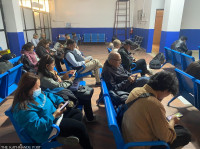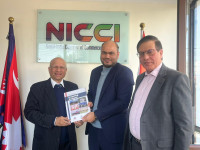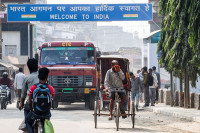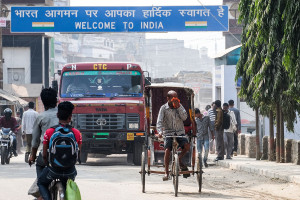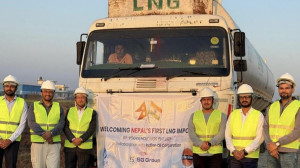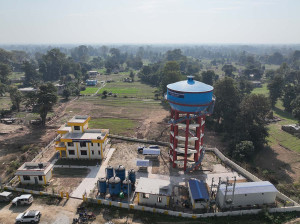Money
Cable viewers in no hurry to upgrade to digital
Old-style analogue television broadcasting will be upgraded to digital format from April 29 in five major cities, but cable viewers do not seem to be in any hurry to obtain set-top boxes which will enable them to receive digital signals.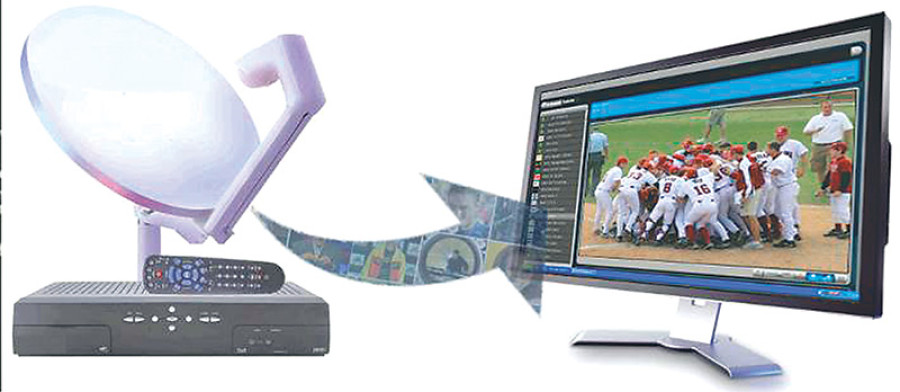
Sanjeev Giri
Old-style analogue television broadcasting will be upgraded to digital format from April 29 in five major cities, but cable viewers do not seem to be in any hurry to obtain set-top boxes which will enable them to receive digital signals.
Major cable service providers say they have received a lukewarm response from subscribers as a majority of them seem to be in a wait-and-watch mode.
They add that people seem to be unenthusiastic about the government’s plan primarily because of lack of awareness. Subscribers who know about the switch from analogue to digital broadcasting, however, are eagerly awaiting the move as it will mean better picture quality.
The government began the process of migrating to digital television by amending the National Broadcasting Act 1993 and National Telecommunications Act 1995 in 2012. The initiative is in line with the 2017 deadline set by the International Telecommunication Union of the United Nations (UN) for countries to go digital.
In accordance with this requirement, the Ministry of Information and Communication (MoIC) directed cable operators to digitize their service within three years. A number of issues like lack of preparation, the 2015 earthquake and subsequent blockade obstructed the government’s plan.
After a series of setbacks, the government finally reached a decision and directed cable TV operators to switch to digital from April 29. In the first phase, the provision will be applicable to cable operators in Kathmandu, Lalitpur, Pokhara, Biratnagar and Birgunj. The government aims to extend the cable digitization process to 58 other towns by mid-November 2017 and across the country by mid-April 2018.
“The fact that analogue cable signals will not be discontinued has played a key role in making people less enthusiastic about upgrading to digital,” said Sudheer Parajuli, president of the Federation of Cable TV Associations of Nepal. “Major cable service providers, however, are ready with the platform.”
Though the government has made it mandatory for cable service providers to broadcast cable through digital transmission system, they can still continue transmitting analogue signals. The MoIC is of the view that the process of digitization should be gradual and hence hasn’t made it mandatory for service providers to only use digital signal.
Consumers switching to digital service will have to connect a set-top box to their television set. They will experience clear connection and high definition channels through a digital cable connection. The government will also be able to find out the actual number of cable service users once the system is digitized. Since people usually split their analogue connection so that the programmes can be seen on several TV sets, it is difficult for the government and service providers to find out the actual number of users.
According to Parajuli, who is also the president of leading cable service provider Subisu, people seem to want to stay with analogue because one connection can be used to watch different programmes on several TV sets.
Some house owners split their cable connection and allow multiple families and individuals to watch television to make money. Subisu has made preparations to install 10,000-12,000 new set-top boxes monthly from May. However, they are not sure how successful they will be due to the lukewarm response from subscribers.
The government’s failure to promote the policy effectively has slowed the planned upgradation. So far, only cable and DTH service providers have been working to shift to digital transmission. Service providers believe a formal call from the government in a proactive manner will produce a better response.
Sujit Jha, director, business development and strategy at Sky Cable, said that it had succeeded in adding just 10,000 subscribers to digital cable signals in the past three months. The company has 75,000 analogue signal subscribers. “We have been calling subscribers and telling them about the government’s move. They are of the view that the government will soon issue a notice extending the deadline,” Jha said.
“This trend is posing a risk to the investment we have recently made in digitization.” He added that people who possessed large LED TV sets and wanted quality service were upgrading to digital on the their own.
According to a rough estimate provided by the Federation of Cable TV Associations of Nepal, around 1 million set-top boxes will be required to upgrade to digital television in the five cities. It is estimated that there are around 3.2 million cable subscribers in the country currently.
Cable service providers expect the number to swell to around 4.5 million as set-top boxes are required to receive digital broadcasting. Expecting a rapid rise in the number of digital cable subscribers, service providers have already purchased or placed orders for set-top boxes.
Dish Home, the only DTH (direct-to-home) service provider in Nepal, too has a similar experience. “We can sense a growth in the number of subscribers. But the number isn’t satisfactory,” said Sudeep Acharya, chief executive officer of Dish Home.
Dish Home has been offering digital cable service since it launched in 2010. According to Acharya, Dish Home has a 15 percent share of the domestic cable market.




 7.12°C Kathmandu
7.12°C Kathmandu
